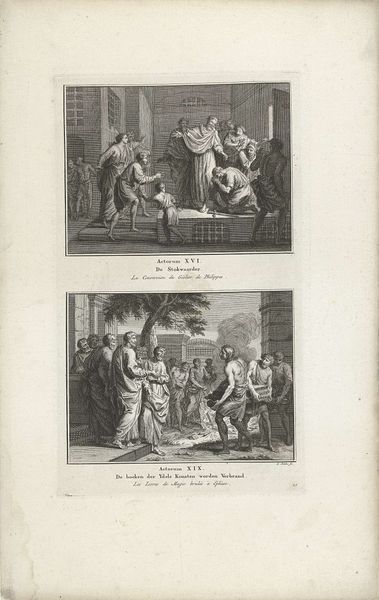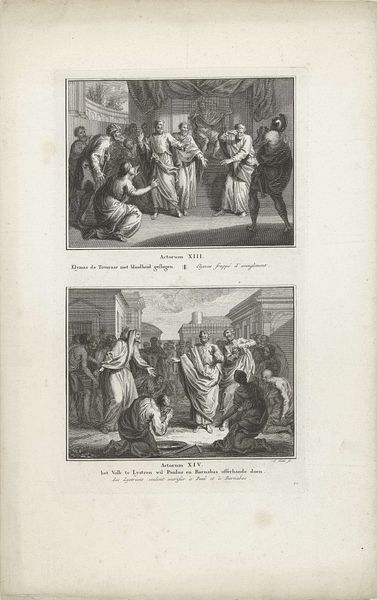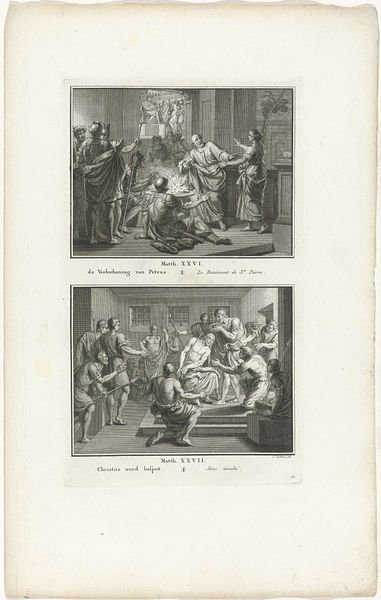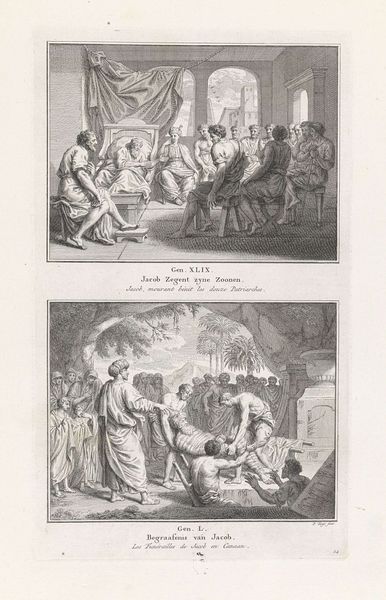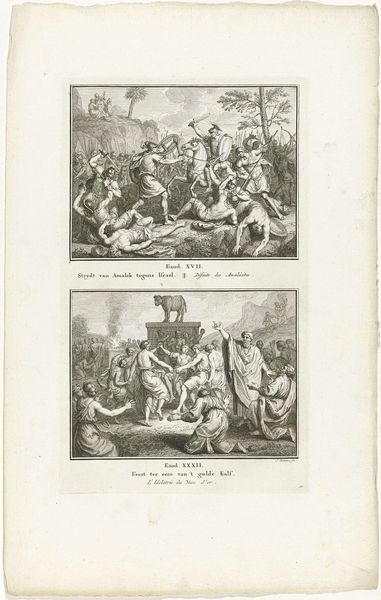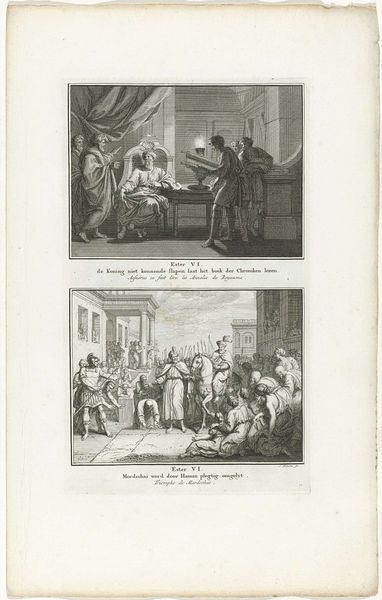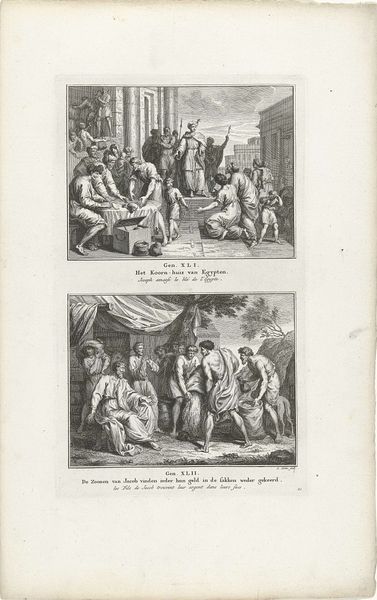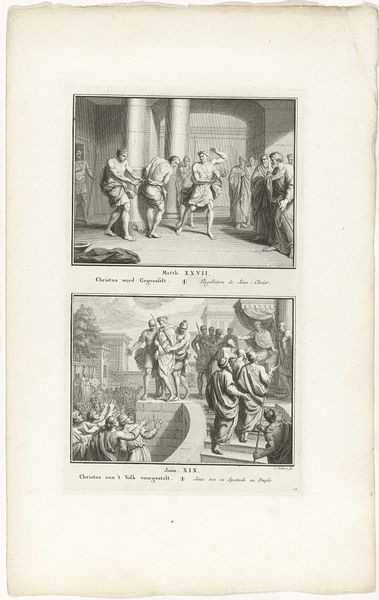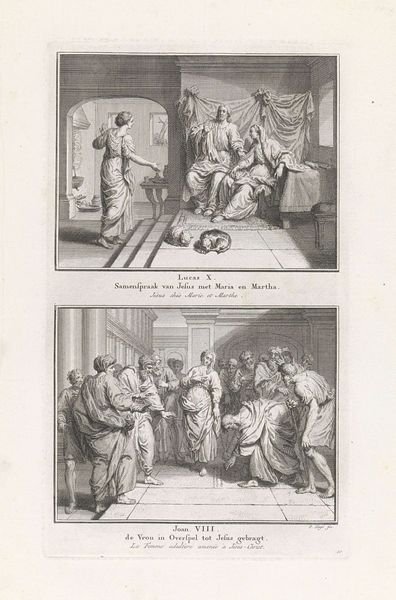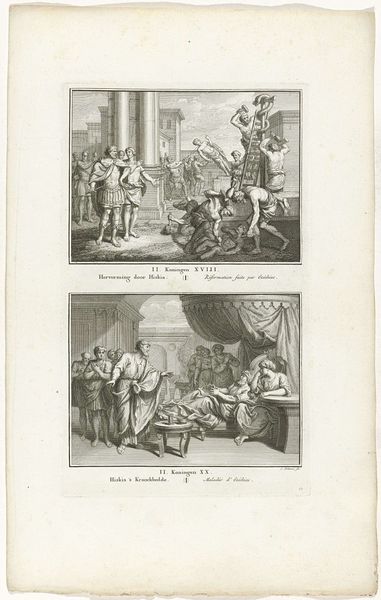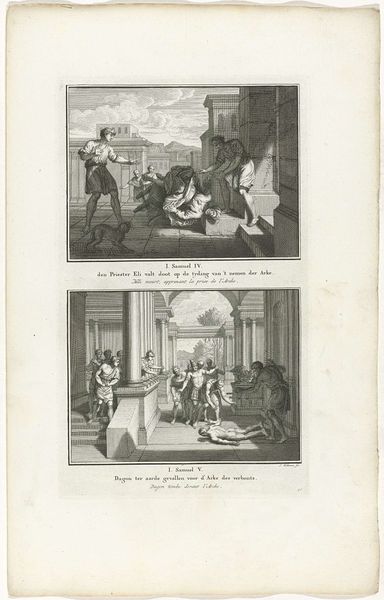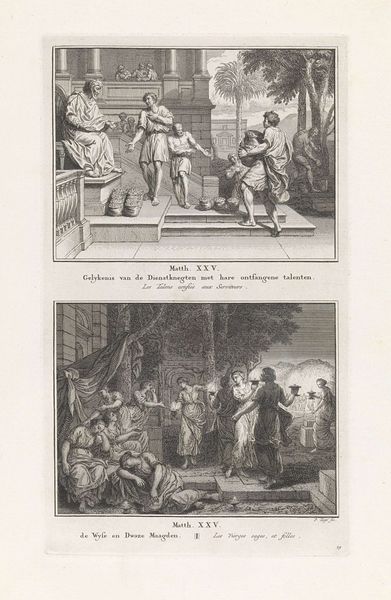
print, etching, engraving
#
neoclacissism
#
narrative-art
# print
#
etching
#
old engraving style
#
ancient-mediterranean
#
history-painting
#
engraving
Dimensions: height 326 mm, width 195 mm
Copyright: Rijks Museum: Open Domain
Curator: Here we have Simon Fokke's engraving from 1791, "The Passover in Egypt and the Death of the Firstborn in Egypt." It's quite a fascinating example of narrative art. Editor: Two scenes, stacked like a graphic novel panel. Visually, it's incredibly dense. All these tiny, precise lines depicting such intense moments. A sense of impending doom hangs heavy, doesn't it? Curator: Absolutely. It presents us with both the Jewish families preparing for the Passover, marking their doorposts with blood as instructed, and then, directly underneath, the devastation brought to the Egyptians. Editor: And look at how differently each scene is lit! Above, a nervous brightness, that lamp hanging overhead. Below, darkness, mourning...such stark contrast! I mean, I can practically hear the wails emanating from the second panel. Curator: The choice to depict both scenes within a single frame speaks volumes about the contemporary historical and political climate. The piece subtly underscores themes of divine justice, national identity, and perhaps even revolution brewing just a few years after the American one. The piece obviously plays on familiar and potent anti-Semitic tropes, and the composition serves to elevate the moral validity and righteous cause of the story's victors over the vanquished. Editor: Hmmm, and how the artist depicts each population speaks to that. Those preparing for Passover feel more orderly, structured. They have direction. Below… chaos reigns. Curator: Exactly. The composition reflects the socio-political attitudes prevalent in late 18th-century Europe. Fokke’s neoclassical style, visible in the idealized figures and architectural details, further elevates the narrative to a kind of historical parable. Editor: It makes you wonder, doesn’t it? About how these historical narratives get visually passed down through generations...even the troubling parts, how they seep into the collective unconscious, shaping perceptions, distorting truths. It's beautiful work that leaves an unsettling feeling with how easily narrative can manipulate belief. Curator: Precisely. It invites a dialogue on not only the historical context of the Exodus story but the very role images play in shaping history and the contemporary relevance of it all. Editor: Yeah, something to unpack… maybe over a nice glass of wine, hours of debate!
Comments
No comments
Be the first to comment and join the conversation on the ultimate creative platform.
